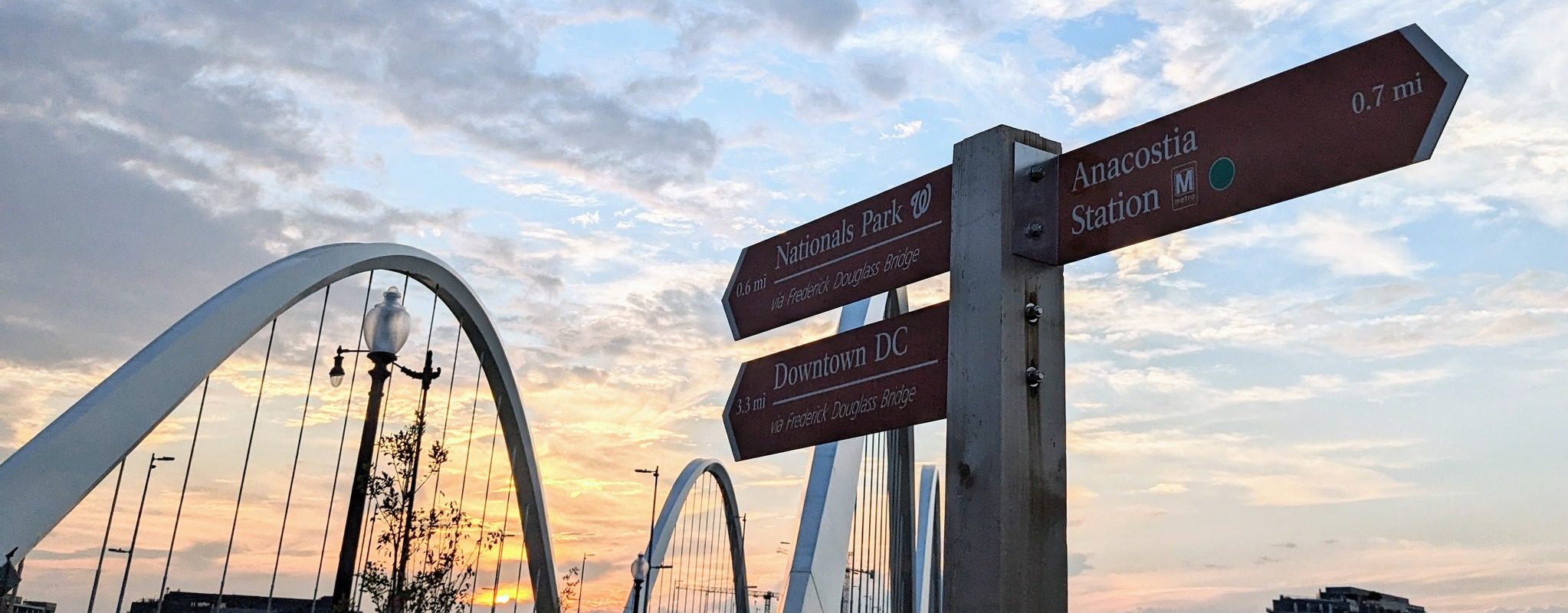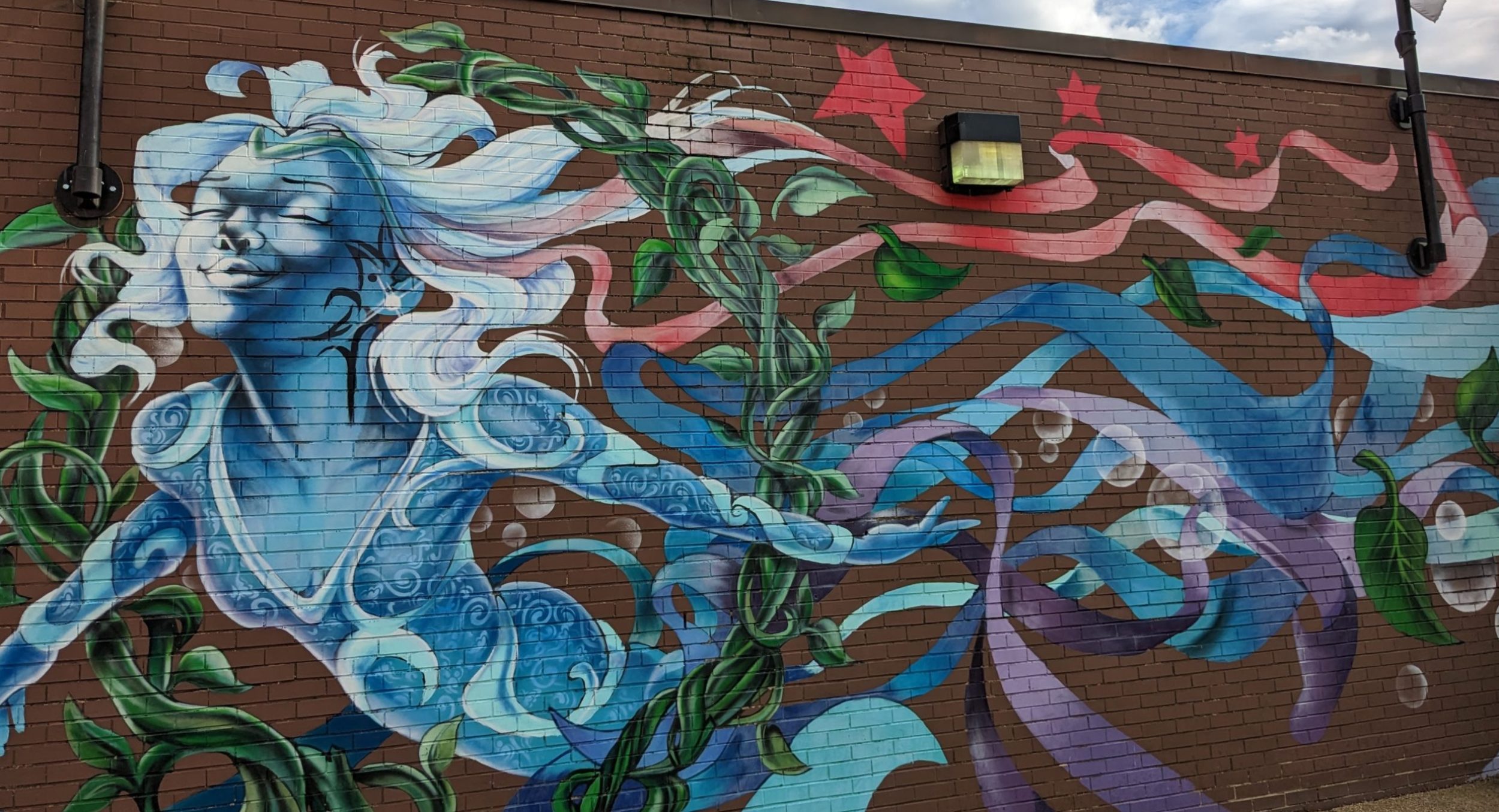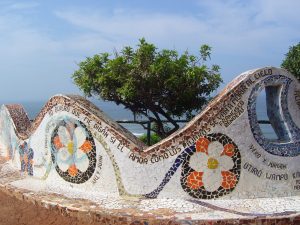 Our day in Lima started with some of the beautiful sights in the Peruvian capital. We took an early morning walk in the seaside suburb of Miraflores. This part of Lima has geography like California and neat modern apartment towers like Miami.
Our day in Lima started with some of the beautiful sights in the Peruvian capital. We took an early morning walk in the seaside suburb of Miraflores. This part of Lima has geography like California and neat modern apartment towers like Miami.
People jogged past us on the path, enjoying the great views of the sea. They wore the same hi-tech sneakers and headphones that you’d see on runners in Santa Monica or South Beach. 
These people clearly have more than the average share of Peru’s economy. Take the value of everything produced in the country in a year, which is what economists call the gross domestic product, or GDP. Now slice up that GDP per Peruvian and it comes out to US$3,826 a head. Not only do the Miraflores joggers have resources — salaries and investment income and such– that top the Peruvian GDP per capita (capita is Latin for head); their wealth probably also in many cases tops the U.S. GDP per capita of $45,725.*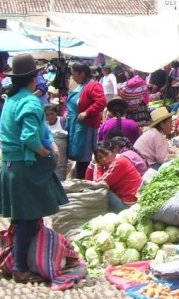
The sight of the joggers was jarring to my husband and me. We couldn’t remember seeing anyone running for sport during the two weeks we spent on the tourist circuit in highland Peru, with a side trip of a few days into Bolivia.
Peru is a country that rises steeply into thin air away away from the coast, with wealth seeming to drop off as the altitude climbs. As seen in the photo of Pisaq market to the left, Andean women most often wear skirts and cheap sandals.
They carry their shop goods in wrapped bundles on their backs, while we tourists went by in expensive hiking shoes and with sturdy backpacks for our cameras, water bottles and Lonely Planet books.
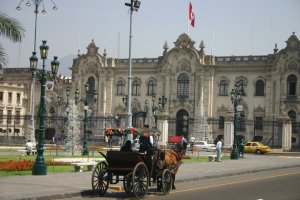 The Spanish pretty much built Lima from scratch. The Incas had lavished their attention on their imperial inland cities like Cuzco and retre
The Spanish pretty much built Lima from scratch. The Incas had lavished their attention on their imperial inland cities like Cuzco and retre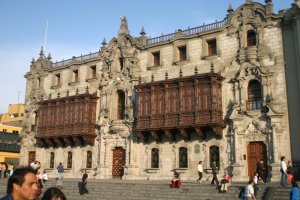 ats like Machu Picchu in the mountains. For the Spanish, the coast was more important. King Charles I of Spain in 1523 set out “procedures” for the creation of cities in the New World. He wanted cities to flow out from square-shaped plazas. I
ats like Machu Picchu in the mountains. For the Spanish, the coast was more important. King Charles I of Spain in 1523 set out “procedures” for the creation of cities in the New World. He wanted cities to flow out from square-shaped plazas. Iwonder if there is another bureau
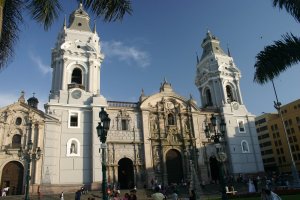 cratic act in history that turned out so well.
cratic act in history that turned out so well.
Many cities in the Americas enjoy the benefits of this planning even today. Francisco Pizarro, the conqueror of Peru, followed the order of King Charles I when he got Lima going in the 1530s. It’s a still pleasure to see, lined with the buildings seen in the photos in this section above.
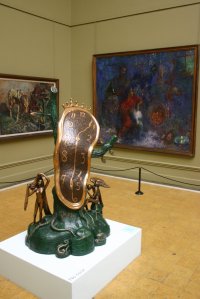 For all its lovely sights, it was the museums of Lima that stood out the most. The nation’s largest art museum was closed for renovations during our visit, but the neighboring little
For all its lovely sights, it was the museums of Lima that stood out the most. The nation’s largest art museum was closed for renovations during our visit, but the neighboring little  Museo de Arte Italiano made up for that. Housed in a gorgeous little building of only a few rooms, the museum was well lit and had a small show of the works of 20th century Spanish surrealist Salvador Dali. I was looking at one of the statues when one of the museum volunteers approached, a college kid who reminded me of singer Jack White. Tall and wearing a formal suit, he asked if I would like to know more about Dali. He went on to tell me things I didn’t know about Dali and make the sculptures more interesting for me. This was a real treat.
Museo de Arte Italiano made up for that. Housed in a gorgeous little building of only a few rooms, the museum was well lit and had a small show of the works of 20th century Spanish surrealist Salvador Dali. I was looking at one of the statues when one of the museum volunteers approached, a college kid who reminded me of singer Jack White. Tall and wearing a formal suit, he asked if I would like to know more about Dali. He went on to tell me things I didn’t know about Dali and make the sculptures more interesting for me. This was a real treat.
Peruvian museums and churches often have a required guided group tour that dashes visitors past the things they most want to see. The worst of these forced marches took us quickly past some of Peru’s best Inca textiles and ceramics at Museo Santuarios Andinos in Arequipa. The mummies struck me as ghoulish, but I wanted a closer look at many of the tunics, pots and talismans. Instead, the guide would move on to another case and inform the group that the simple red-and-black painted pot before us was …”red and black.”
The Museo Santuarios Andinos houses recent discoveries of Incan sacrifical burials, including that of “Juana,” a 14-year-old girl killed in the middle of the 1400s.
Frozen in time, as it were, the bodies of these young people were found along with the fine tunics, ceramics and jewelry left at their burial sites. Scientists have carefully studied Juana’s mummy, including a team at Johns Hopkins that used CT scans. They concluded that priests killed Juana with a precise blow to the head, and that her death was an offering to the gods. The museum also has the mummies and belongings of several other adolescents killed centuries ago.
Historians think that they came from affluent families, and being selected for such a death was an honor.
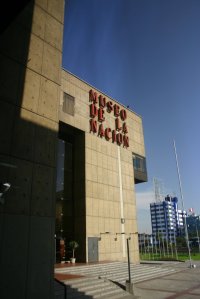 Housed in this rather ugly concrete hulk of a museum is the best and worst of Peru. The cavernous and largely empty Museo de la Nacion offers at least a small sample of many Peruvian
Housed in this rather ugly concrete hulk of a museum is the best and worst of Peru. The cavernous and largely empty Museo de la Nacion offers at least a small sample of many Peruvian  artistic styles and traditions, crossing from the centuries before the birth of Christ into modern times. There are pitchers made to look like men and animals, like the one shown in the image I borrowed from Google Images to the right. Some of the art dates to the times of Alexander the Great. There also are paintings from Spanish colonial times and ceramics done as folk art.
artistic styles and traditions, crossing from the centuries before the birth of Christ into modern times. There are pitchers made to look like men and animals, like the one shown in the image I borrowed from Google Images to the right. Some of the art dates to the times of Alexander the Great. There also are paintings from Spanish colonial times and ceramics done as folk art.
And, then there is the entire floor of the Museo de la Nacion dedicated to a photo exhibit about the slaughter of Peruvians by Peruvians in the 1980s and 1990s. More than 69,000 Peruvians died or disappeared at the hands of crazed rebel groups and out-of-control government authorities, while the U.S. rolled peacefully through its comfortable “Cosby Show” years into its cozy “Seinfeld” era.
To learn more..
This is a video based about what happened in Peru, drawing work from an exhibit named Yuyanapaq. This is the one that we saw at the museum. The words at the end are from a poem by Cesar Vallejo, a Peruvian poet who died in 1938, decades before his country’s very dark years. This is the text of the Vallejo poem in Spanish and English.
If you want to know more about the Yuyanapaq exhibit or what happened in Peru in the 1980s and 1990s, I recommend this thesis by photojournalist Robin Hoecker. Chapter 2 has provides a quick, but pretty comprehensive, recap of what happened.
*The income figures are taken from the International Monetary Fund and represent what happens when you divide the GDP by the population. These numbers often are adjusted to reflect a difference in local prices against those charged in another country, often the U.S. Because prices are cheaper in Peru, its GDP per capita adjusted for purchasing power parity jumps to about $8,500. So at best, it’s like people in Peru on average would have $8,500.
